All About Perfume
5 must-have fragrances for men
Unisex fragrances
Pink is for girls, and blue is for boys. Or so they might once have had us believe.
Such antiquated modes of thinking and brutal stereotypes have fortunately (for the main part at least) been put behind us - our social and moral consciousness has evolved enormously as compared to our awareness only 25 years ago.
Men are now nurses and caretakers of children, and women are pilots and engineers. Our dreams and aspirations are infinitely diverse, so we now seem to be striking a balance in our lives where gender plays a more peripheral role in our professions, relationships and interests.
So why then, would we support and observe the classification of perfume by gender? In the vast history of perfume that has spanned the millennia, “men's fragrances” and “women's fragrances” as a concept is a relatively recent one.
The late 19th century saw a shift in perfume production from single-flower essences to blended formulas, which began to target consumers based on their sex - but for centuries prior to this, fragrance was gender-neutral.
Let me ask you … what is the smell of a man? Or of a woman? Are we doomed to reek forever of the sexual division of labor - he as woodchopper, leatherworker and spice merchant, and she of a food gatherer and nurturing mother?
If we can remove social conditioning and the division of labor from the equation for a minute, then is the scent of a forest a male smell or a female one? Or rain on asphalt? And what about freshly baked bread? Or even a rose for that matter!
In today's market, “unisex” fragrances tend to represent the closest return to traditional values as they have mass appeal, irrespective of gender. But for the perfume aficionado, he or she is doing him/herself a gross injustice by not exploring scents marketed to the opposite sex.
For starters, you're reducing your chances of finding your fine fragrance “Holy Grail” by half! My challenge to you is to take a deep breath, ignore the funny looks, and truly explore the other side of your local perfume store.
Fragrance is something to be appreciated - not for the gender suggested on the bottle or box - but for the fragrance itself.
Here is our short list of opposite-sex alternatives for both men and women to experience on skin:
LADIES, TRY: Issey Miyake Pour Homme, Jean Paul Gaultier Fleur du Male, Kenzo Power, Christian Dior Homme.
MEN, TRY: Tom Ford's Black Orchid, Kenzo Jungle L'Elephant, Juliette Has a Gun Citizen Queen, Guerlain Jicky.
Such antiquated modes of thinking and brutal stereotypes have fortunately (for the main part at least) been put behind us - our social and moral consciousness has evolved enormously as compared to our awareness only 25 years ago.
Men are now nurses and caretakers of children, and women are pilots and engineers. Our dreams and aspirations are infinitely diverse, so we now seem to be striking a balance in our lives where gender plays a more peripheral role in our professions, relationships and interests.
So why then, would we support and observe the classification of perfume by gender? In the vast history of perfume that has spanned the millennia, “men's fragrances” and “women's fragrances” as a concept is a relatively recent one.
The late 19th century saw a shift in perfume production from single-flower essences to blended formulas, which began to target consumers based on their sex - but for centuries prior to this, fragrance was gender-neutral.
Let me ask you … what is the smell of a man? Or of a woman? Are we doomed to reek forever of the sexual division of labor - he as woodchopper, leatherworker and spice merchant, and she of a food gatherer and nurturing mother?
If we can remove social conditioning and the division of labor from the equation for a minute, then is the scent of a forest a male smell or a female one? Or rain on asphalt? And what about freshly baked bread? Or even a rose for that matter!
In today's market, “unisex” fragrances tend to represent the closest return to traditional values as they have mass appeal, irrespective of gender. But for the perfume aficionado, he or she is doing him/herself a gross injustice by not exploring scents marketed to the opposite sex.
For starters, you're reducing your chances of finding your fine fragrance “Holy Grail” by half! My challenge to you is to take a deep breath, ignore the funny looks, and truly explore the other side of your local perfume store.
Fragrance is something to be appreciated - not for the gender suggested on the bottle or box - but for the fragrance itself.
Here is our short list of opposite-sex alternatives for both men and women to experience on skin:
LADIES, TRY: Issey Miyake Pour Homme, Jean Paul Gaultier Fleur du Male, Kenzo Power, Christian Dior Homme.
MEN, TRY: Tom Ford's Black Orchid, Kenzo Jungle L'Elephant, Juliette Has a Gun Citizen Queen, Guerlain Jicky.
The art of the perfume bottle
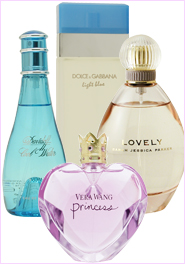 For millennia, perfume has been intended as a means to scent oneself, and has evolved from primitive oils and salves made in ancient civilizations to the modern "headspace technology" synthetics and essences that perfumers use in their palettes today. One thing is a constant though, and that is the way in which perfumes are presented -- in beautiful flacons that speak of the enchanting elixirs within.
For millennia, perfume has been intended as a means to scent oneself, and has evolved from primitive oils and salves made in ancient civilizations to the modern "headspace technology" synthetics and essences that perfumers use in their palettes today. One thing is a constant though, and that is the way in which perfumes are presented -- in beautiful flacons that speak of the enchanting elixirs within.The rise of celebrity fragrances
.jpg) In 1987, Elizabeth Taylor introduced White Diamonds perfume to the fragrance market, paving the way for the wildly popular celebrity signature scent. Her lightning-rod success inspired more and more stars to jump on the fragrance bandwagon. Today, everyone from movie stars to musicians to professional athletes has a fragrance to call their own.
In 1987, Elizabeth Taylor introduced White Diamonds perfume to the fragrance market, paving the way for the wildly popular celebrity signature scent. Her lightning-rod success inspired more and more stars to jump on the fragrance bandwagon. Today, everyone from movie stars to musicians to professional athletes has a fragrance to call their own. How to buy fragrances for women
 If one object can embody the sum and soul of a woman, it would be a bottle of perfume … but often, it can prove a very difficult task to choose the right perfume for the right person. Here are some tips to help you buy a fragrance that will wow that special lady in your life.
If one object can embody the sum and soul of a woman, it would be a bottle of perfume … but often, it can prove a very difficult task to choose the right perfume for the right person. Here are some tips to help you buy a fragrance that will wow that special lady in your life.How to buy fragrances for men
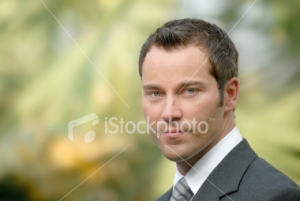 Anyone who has a father or brother can attest to the fact they're usually impossible to shop for. Colognes are always an excellent option, but many find it frustrating to choose a fragrance for men. Here are our top five pointers for men buying fragrance for themselves, or for others wishing to buy a gift for a special man in their life.
Anyone who has a father or brother can attest to the fact they're usually impossible to shop for. Colognes are always an excellent option, but many find it frustrating to choose a fragrance for men. Here are our top five pointers for men buying fragrance for themselves, or for others wishing to buy a gift for a special man in their life.5 must-have fragrances for women
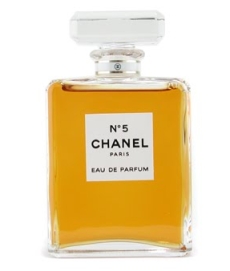 In an ideal world, all women would own a bottle of Chanel No. 5.
In an ideal world, all women would own a bottle of Chanel No. 5. In 1921, Gabrielle "Coco" Chanel tasked perfumer Ernest Beaux with creating a fragrance that would define women. Nearly 100 years later, Chanel No. 5 remains the top-selling perfume in the world. Why is it called Chanel No. 5? Because it took Beaux five attempts to get it just the way Coco Chanel wanted it.
10 ways to use magazine perfume samples
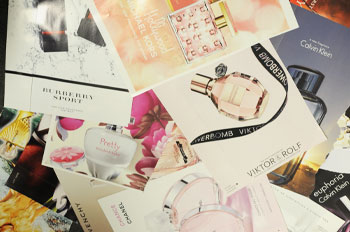 What do you do with all those perfume samples from magazines? Give them a quick sniff? Toss them in the trash? Collect them? Perfume samples are handier than you think. Here are 10 ways to put them to good use.
What do you do with all those perfume samples from magazines? Give them a quick sniff? Toss them in the trash? Collect them? Perfume samples are handier than you think. Here are 10 ways to put them to good use.How to find a perfume that is right for you
 Finding a perfume that is just right for you can feel like an overwhelming task. Given the thousands of fragrances on the market, it may seem easier just to stick with what you've always known. If that were the case for me, I'd still be wearing the 1986 version of Liz Claiborne perfume -- the one in the red triangle-shaped bottle.
Finding a perfume that is just right for you can feel like an overwhelming task. Given the thousands of fragrances on the market, it may seem easier just to stick with what you've always known. If that were the case for me, I'd still be wearing the 1986 version of Liz Claiborne perfume -- the one in the red triangle-shaped bottle.Applying perfume the right way
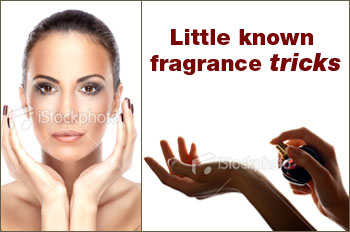 If you're like most people who wear fragrance, you probably spray a little on your neck, spritz some on one wrist, rub it on your other wrist and call it a day. Did you know there is a correct way to apply your fragrance, though?
If you're like most people who wear fragrance, you probably spray a little on your neck, spritz some on one wrist, rub it on your other wrist and call it a day. Did you know there is a correct way to apply your fragrance, though? 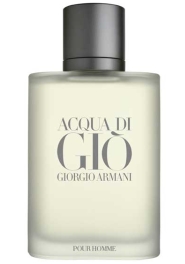 The popularity of men's fragrances has risen over the years. It's not just
The popularity of men's fragrances has risen over the years. It's not just 

